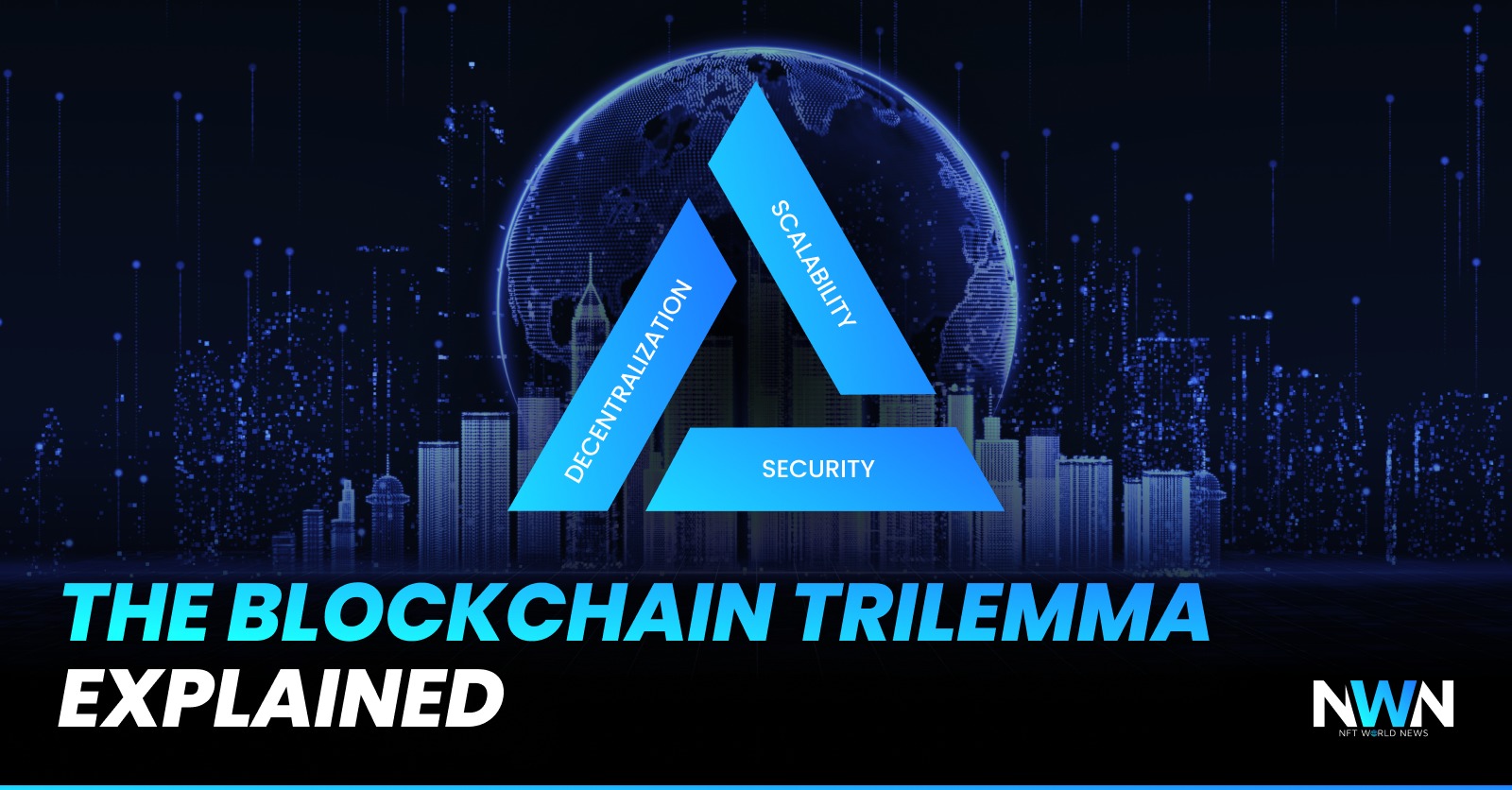Quick Summary
- Blockchain Trilemma is a concept created by Vitalik Buterin. Blockchain Trilemma consists of decentralization, security, scalability, and projects find it difficult to maximize the results of all these 3 parts at the same time.
Blockchain Trilemma is a concept made by Vitalik Buterin, the founder of Ethereum (ETH). It’s an idea that projects are looking to solve but what exactly is the blockchain trilemma, and why isn’t there an easy solution? Let’s dive in!
related: Decentralized Autonomous Organization (DAO) Explained
The Blockchain Trilemma
Do you know how difficult it is to strike a balance between social life, job, and sleep? The trilemma of the blockchain is very similar to this concept. The bitcoin community holds the notion that truly decentralized networks must choose between security and scalability.
However, there are new projects created every year that try to solve these issues, offering the best kind of decentralization, security and scalability. What if there is or will be a crypto project that will solve the blockchain trilemma? Before we suggest solutions, let’s make sure you understand every one of these 3 parts of the concept.
Decentralization
Decentralization refers to how power is distributed across smaller organizations to administer something rather than being concentrated in one central institution, company, or government. Decentralization in blockchain empowers people all over the world to rule using their computers (nodes), rather than having a single person or entity running the network. It’s about the connection that’s created throughout the whole world rather than one entity controlling the network.
Security (on the blockchain)
Although blockchain is fundamentally safe, it is not without risk of being hacked. A hacker can edit a blockchain and manipulate transactions to steal from the network if they get control of more than half of the network (51 percent). The more nodes in a blockchain, the more secure it is. That’s also why newer projects focus on creating tons of nodes inside their blockchain.
Scalability
In the blockchain, scalability is similar to scalability in business; it refers to how large a network may expand in the future while keeping the current level of transaction speed and output. When scalability and decentralization operate together, security suffers, because security prevents innovations that would allow the decentralized network to scale. Why? Decentralized networks are difficult to scale because they need a significant amount of effort to function. It’s a complex concept as you can see…
The Trilemma…
Decentralization and security are the two main cornerstones of the blockchain, and scalability is something that can improve the whole thing. However, scalability presents a threat to security. But why do we even need to scale? Bitcoin and Ethereum are fine unless too many people use them…well, and now you see the answer.
The blockchain industry needs scalability like people need air to breathe because then the transactions will be slow and very expensive. So simply put, if blockchain technology is going to reach any sort of mass adoption, scalability is critical.
Possible Solutions
Sharding
Sharding has grown in popularity as a way to expand projects like Ethereum that don’t rely on a third-party network. When a network “shards,” it divides the blockchain’s transactions into smaller chunks of data that can be handled more quickly by the network.
This means that more transactions can be processed at once without causing congestion. The different shards interact with each other and transfer information to the main blockchain, which ensures that information is not compromised.
Rollups
Rollups on Ethereum’s blockchain allow networks to “roll-up” several transactions into a single off-chain (with certified proof) and then submit the rolled-up data to the main chain. It’s similar to carpooling. Rollups are clever because they lower the amount of data required for a transaction, resulting in less traffic and faster transactions.
Relay Chains and Parachains
Rather than proposing a single blockchain solution, Polkadot, for example, prefers the idea of blockchains cooperating with one another (interoperability). To provide a highly scalable network, the network is developed with “a relay chain” as the backbone. It accomplishes this by employing “parachains,” which are separate blockchains connected to the main relay chain. It implies that the chains manage themselves independently, allowing the network to scale, but they all work together for added security.
The Lighting Network
Because it provides an additional layer that sits above the main network, the Lightning Network is referred to as a layer 2 solution. As an example, Bitcoin “suffers from success” and has issues with transaction speed and cost. The Lightning Network allows you to transact without having to deal with Bitcoin’s main chain directly.
Conclusion
Even though the majority of people are unaware of the blockchain trilemma, they are aware of the issues it poses (such as Bitcoin’s slower transaction speed). If projects can effectively address the trilemma, we may be on the verge of seeing new levels of blockchain adoption. We’re looking at a scalable blockchain future where individuals across many industries (from money to logistics, from laws to property) can benefit if there’s an effective way to tick the “decentralized” box without worrying about security and the inconvenience of a lack of scalability.
Instead of relying on a traditional, centralized, and regulated system, blockchain provides a more fair, more level playing field for individuals to develop.
more to read
How To Do Research (DYOR) Before Investing And Avoid Rug Pull
BKEX Review: A Reliable Digital Asset Trading Platform
Vitalik Buterin Is Slamming The NFT Empire
NFT World News Social Media: Twitter, Instagram, Telegram, Tiktok, Youtube
sources: ledger, coinmarketcap, medium
author: Rene Remsik
Disclaimer: This article is provided for informational purposes only. It is not offered or intended to be used as legal, tax, investment, financial, or other advice.
Disclaimer: This article is provided for informational purposes only. It is not offered or intended to be used as legal, tax, investment, financial, or other advice.





